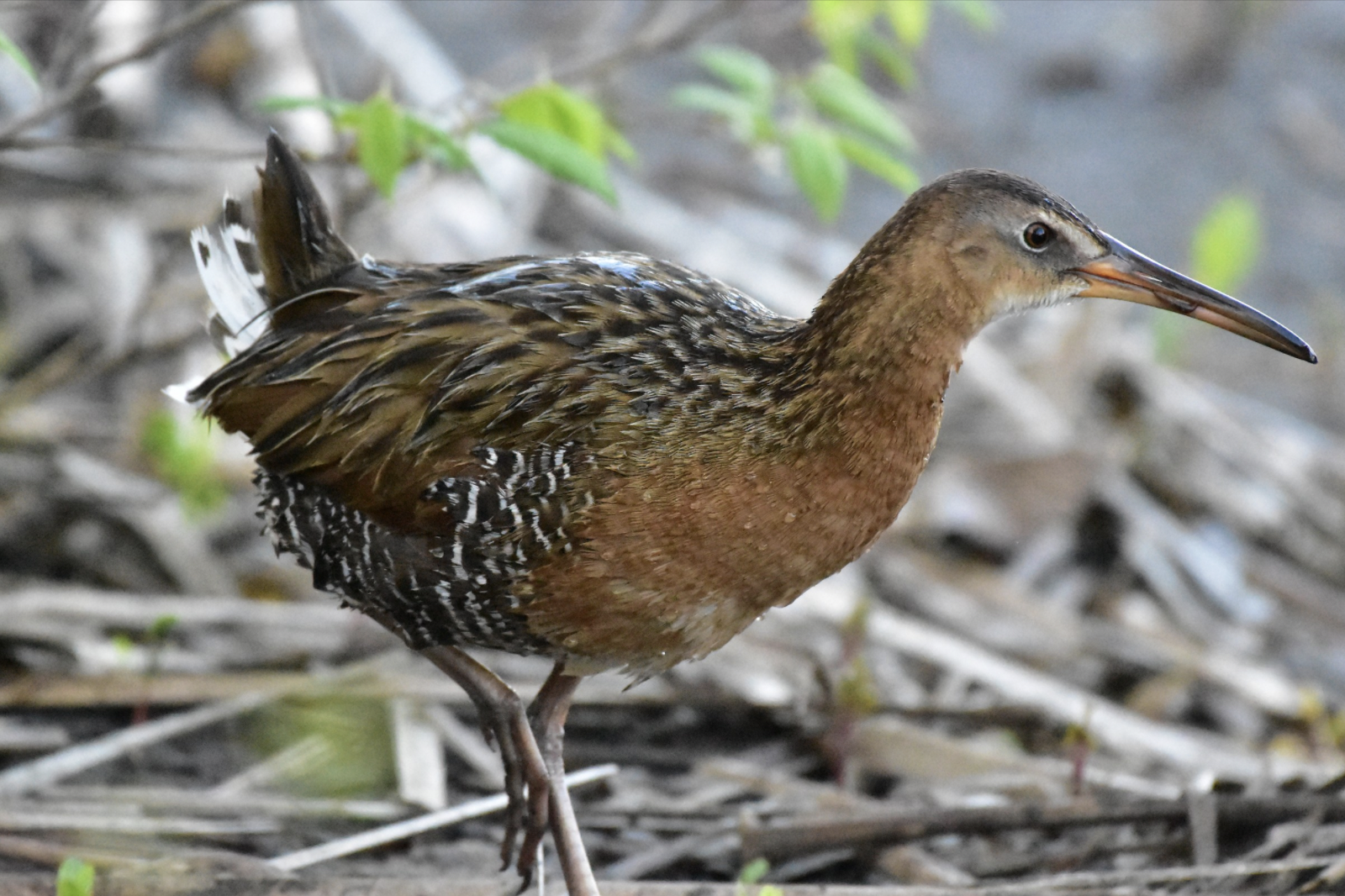The Vermont Bird Records Committee (VBRC) held its 40th annual meeting in November 2020. Each year, this panel of experienced birders meets to discuss rare bird reports, out-of-season reports, and rare nesting reports submitted by birders from across the state. At the 2020 meeting, 76 records were voted on, involving 45 species, one subspecies, and one hybrid. Excitingly, three of these records involve bird species never recorded before in Vermont!
The Crested Caracara is well-known to birders in southern Florida, Texas, and Arizona as a desert scavenger. Common throughout South and Central America, this species is also the national bird of Mexico, where it is often referred to as the “Mexican Buzzard”. You’d be right to wonder, then, what one Crested Caracara was doing all the way up in the Champlain Islands in March of 2018. An observer posted a photo of this strange bird to the Vermont Atlas of Life on iNaturalist, originally identifying it as a Bald Eagle nicknamed “Elvis” due to its distinctive ‘hairdo’. Once the identification had been corrected and the observer had been contacted, a Rare Species Description form was sent into the committee right around the same time as a shocking second Crested Caracara made a brief appearance in Woodstock. To read more about these exciting first and second state records, you can revisit our blog post here.
Every fall, Semipalmated Plovers and other shorebirds migrate through Vermont, concentrating in areas with exposed mudflats such as Dead Creek WMA and Delta Park IBA. One area with extensive mudflats that’s a little tougher to access than these two well-known birding hotspots is the Missisquoi River Delta in Highgate, Vermont. It is here where birders Jacob Crawford, Max Carroll, and Chris Liaszos found the birding equivalent of a needle in a haystack—Vermont’s first documented Common Ringed Plover. Extremely similar in appearance to the much more common Semipalmated Plover, the Common Ringed Plover breeds in the high Eurasian arctic and Greenland, migrating south to Africa and the Middle East. Not only did this individual hop across the Atlantic, but it happened to be encountered by a group of birders who were able to thoroughly document the rare occurrence and nail this tricky identification challenge.
The final first state record from the 2020 VBRC report features a skulking marsh-dweller that put on quite the show for birders visiting the confluence of the Waits and Connecticut Rivers in Bradford, Vermont. Local birder Bill Shepard originally encountered a strange rail that didn’t look or sound like the Virginia Rails that frequented the area. After photographing the bird, recording its calls, and consulting identification resources, he realized he had found Vermont’s first King Rail! In the coming days, this bird known for being notoriously difficult to spot was seen by many birders strutting around the marsh and even occasionally scurrying into the open to cross the train tracks or swim in open water.
One more first from the 2020 report focuses on a species that has become somewhat common in recent years in Burlington, Brattleboro, and Bennington—the Black Vulture. A species once restricted to more southern latitudes and coastal areas, Black Vultures have made a large push north in recent years, and last year a pair was reported to have successfully nested in Vermont for the first time. Using a dilapidated barn in Burlington as their nest site, this nest would likely have been unsuccessful were it not for a group of local birders who stepped in and postponed the demolition of the building. A single nestling successfully fledged from this nest, and it will be interesting to see whether this is the first of many Black Vulture nests in the state as climate change continues to drive this opportunistic species northward.
These four reports are just a handful of highlights from a year that included reports of such rarities as Say’s Phoebe, Willow Ptarmigan, and Wilson’s Storm-Petrel. To see the full report of the 2020 VBRC meeting, click here.
We thank the entire Vermont birding community for your willingness to document these rare sightings and your efforts to improve our understanding of the distribution and abundance of birds in Vermont. Please consider adding all of your bird sightings to Vermont eBird, a project of the Vermont Atlas of Life. To learn more about how you can report rare sightings, download the official Vermont State Bird Checklist, and much more, visit the VBRC website.











